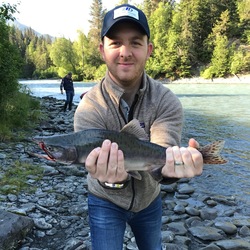History Wines
Corison
Napa Valley Cabernet Sauvignon 2010

Viuva José Gomes da Silva & Filhos
Collares Ramisco 1931
One of the rarest and most unique wine in the world, DOC Colares - ungrafted vines planted on the characteristic sandy soils from this region, happy to drink history - this 1931 red kept a great freshness (even better than 1969) , a very nice aged wine, and amazing price, I'm a fan of Colares 😃 — 11 years ago
Robert Keenan Winery
A Nod to History Zinfandel Premiere Lot #120 2012
3. Nice zin. Great balance. Not as spicy — 12 years ago
Domaine de la Romanée-Conti (DRC)
La Tâche Pinot Noir 1978
Oh how I wish these were in my cellar! 2-1985 Romanee Conti, 1.5 liter 1978 La Tache and 2 1945 Mouton Rothschild. This was to me a once in a lifetime tasting even though I've tried the 45 and 85 many years ago. But to have a little sip back to back to back was heaven! Couldn't even tell you which was the best. It didn't matter, I was drinking history! — 13 years ago
Lewis Cellars
Napa Valley Cabernet Sauvignon 2013
This wine was epic, color, taste, tannins. You can drink now or hold for 10 years. Dark fruit, tar, licorice, tobacco, this is a young wine, once it grows up, it could be one for the history books! — 9 years ago
Robert Mondavi Winery
Napa Valley Cabernet Sauvignon 1986
Outstanding bottle. Fruit leather, dried black currants, still some tart plum skin and blackberry. Long finish on notes of cedar, licorice, dried tobacco and hints of dried vanilla pod. Nice bit of acid as well. 12.5 ABV. Always great to taste history like this. — 10 years ago
Stag's Leap Wine Cellars
Artemis Napa Valley Cabernet Sauvignon
A taste of history — 10 years ago
Ridge Vineyards
Monte Bello Ruby Cabernet Cabernet Sauvignon Blend 1978
A piece of CA history. Ruby Cabernet was bred at UC Davis, a cross between cab sauv and Carignane, typically used for jug wine, but this one was lovingly made by Paul Draper, nose a bit tired, but a lively three-dimensional palate, with refined pebbly tannins. — 12 years ago
La Braccesca (Antinori)
Vino Nobile di Montepulciano Sangiovese Blend 2011
Good Stuff, a great alternative to a Chianti. A great history to the area, I like that vintners are going back to their roots and making some great wines. Cherry, plumbs, leather, a little spice, everything reallll Nice — 9 years ago
Chateau Montelena
Napa Valley Chardonnay 2013
Tasting notes from a Judgement of Paris anniversary event at Cadillac Wines tonight...
Tart, green apple, and great acidity. Very little butter, which was a refreshing take on a chard. Same recipe has been used to make this wine since the beginning. Great history. — 10 years ago
Heitz Cellar
Martha's Vineyard Cabernet Sauvignon 1969
More history than anything. The wine was pretty dead but there was just a little bit of life left. Mostly raisins but lots of dying mint, tobacco and older oak character. No tannin at all. — 10 years ago
Charles Krug
Napa Valley Cabernet Sauvignon
History in a bottle — 12 years ago
Beaux Frères
The Upper Terrace Pinot Noir 2010
Lessons in history. — 12 years ago
Château Soutard
Saint-Émilion Red Bordeaux Blend 1985
Awesome. Great acid! History in my mouth! — 13 years ago














Somm David T
Independent Sommelier/Wine Educator
On the nose, stewed fruits of; black plum, blackberries, dark cherries, plum and blueberries. Mocha, chocolate, mixed berry cola, sweet spice, cinnamon, nutmeg, caramel, loamy mineral soils and dry dark florals. The mouthfeel is less concentrated than other vintages of Corison but that's indicative of the 10 Napa vintage generally. The tannins are nicely resolved with another 5-8 years before they are completely resolve. The fruits are; dark cherries, black plum, plum, black raspberries, blackberries with strawberries that dance around the rest of the fruit. There's nice barrel toast, vanilla, nutmeg, light clove, cinnamon, touch of wood shavings, liqueur notes, caramel, mocha chocolate, mix berry cola, loamy soils, dry crushed rocks, bramble, dry stems with nice soft round acidity. The finish is a little lean but tasty. Good balance of fruit and earth with long, rich elegance. Cathy slightly overachieved the 10 vintage as a whole. Photos of; her estate building, Cathy in her vineyard, grapes coming in at night (better to harvest when the fruit is cooler) and her estate vineyard in all it's glory. Producer notes and history...Cathy Corison grew up in Riverside, California. She studied biology at Pomona College and was on their men's diving team, because the school didn't have a women's team. In 1972, she had to take an extracurricular class. She signed up for a trampoline class, but changed her mind upon seeing a sign-up sheet for a wine tasting class. This class was the catalyst that sparked her interest in winemaking. After graduation in 1975, she moved to Napa Valley in California. She received her Master's degree in Enology from University of California, Davis. Upon moving to Napa, she started working in the tasting room at Sterling Vineyards and at a wine shop. During this time, she was getting her Master's degree at the University of California, Davis. She was told by her professor that she would not get a job in Napa Valley because of being a woman. However, if she wasn't the first Napa Valley female Winemaker, she was certainly one of the first. She tried to get a job at Freemark Abbey and was denied because they believed she could not work in the cellar. She almost took a job at Christian Brothers in the enology lab. However, she decided not to take the job and in 1978 she became an intern at Freemark Abbey and eventually became their Winemaker. She joined Chappellet in 1983 and was their Winemaker for nearly ten years. She founded Corison Winery, in 1987. The winery is located in St. Helena, California in a barn built by her husband, William Martin. Corison makes Cabernet and Gewürztraminer. They produce about 3,500 cases a year depending on the vintage. The winery makes a Kronos Vineyard Cabernet Sauvignon and as well as a Napa Valley Cabernet Sauvignon. The Kronos is an estate wine that is made from organic grapes. The vineyard is dry farmed. The grapes come from one of the oldest vineyards in Napa Valley. The Napa Valley Cabernet comes from Rutherford. The Gewürztraminer is called Corazón and comes from the Anderson Valley. — 8 years ago